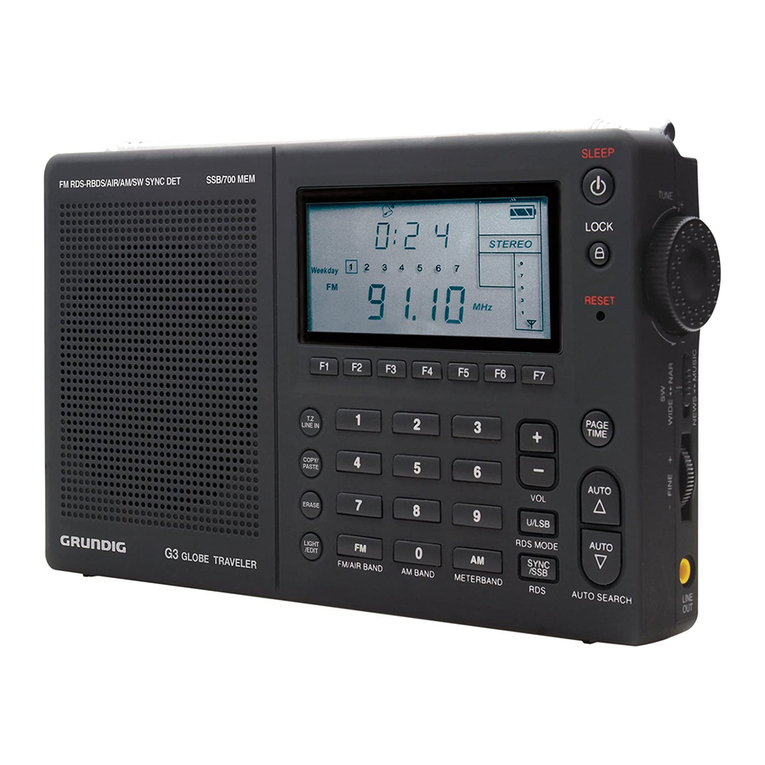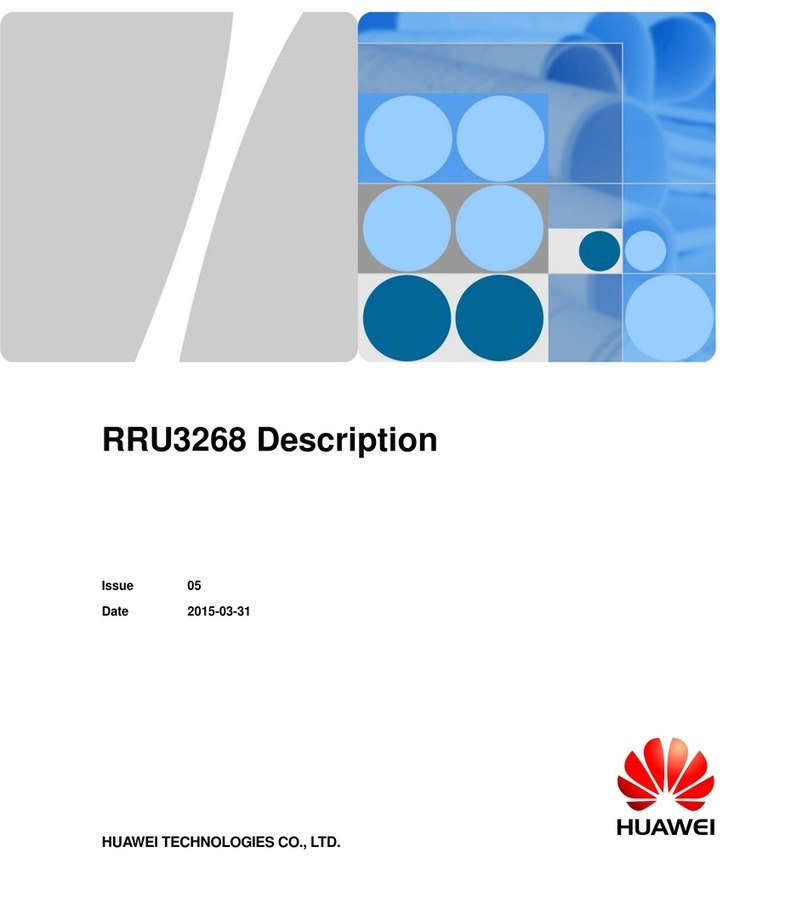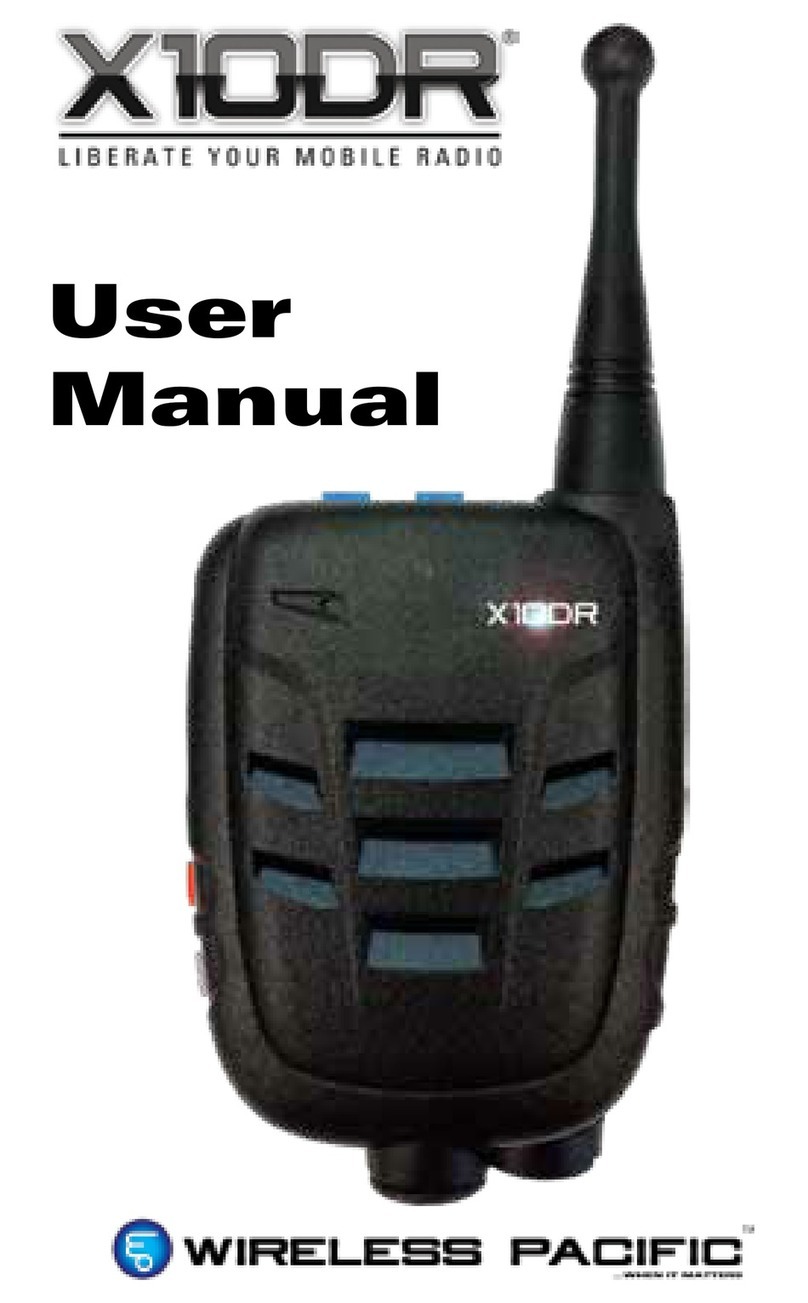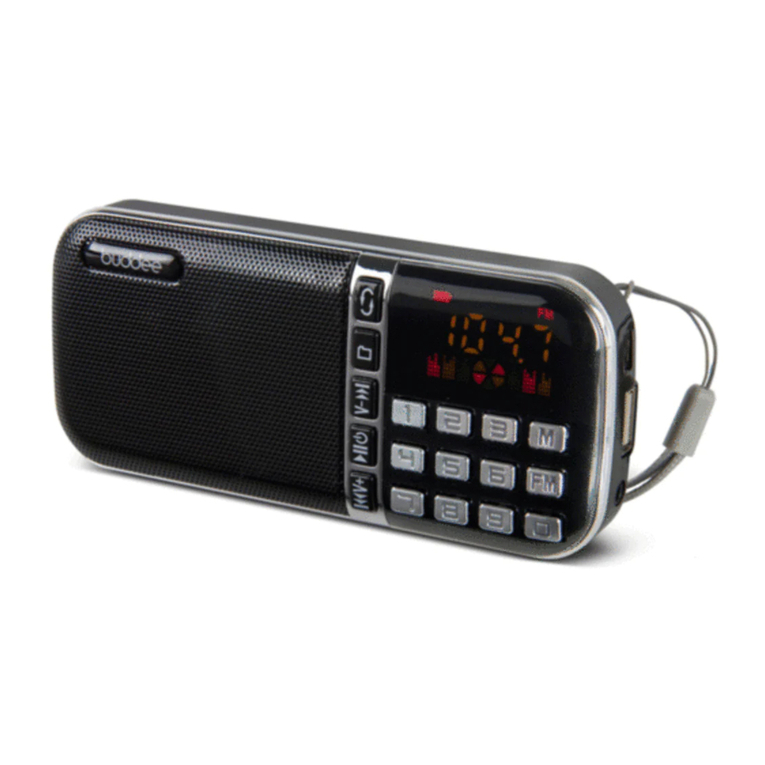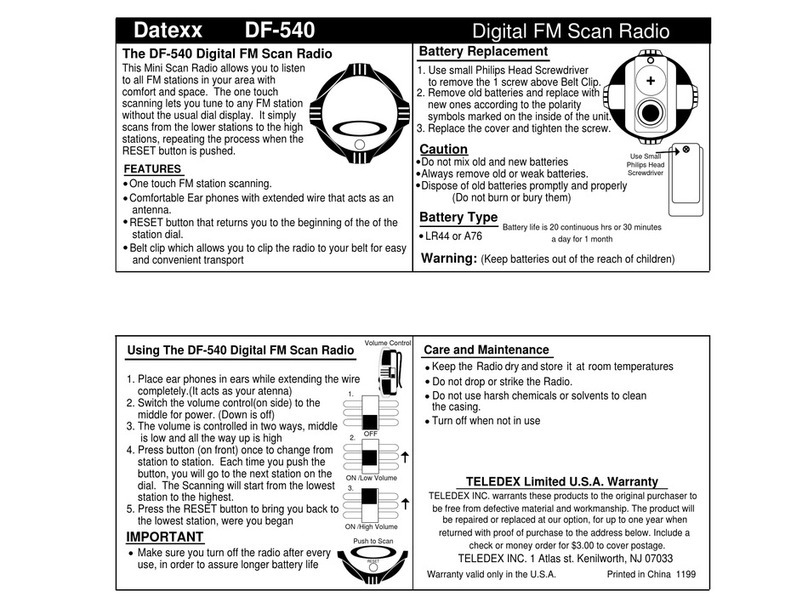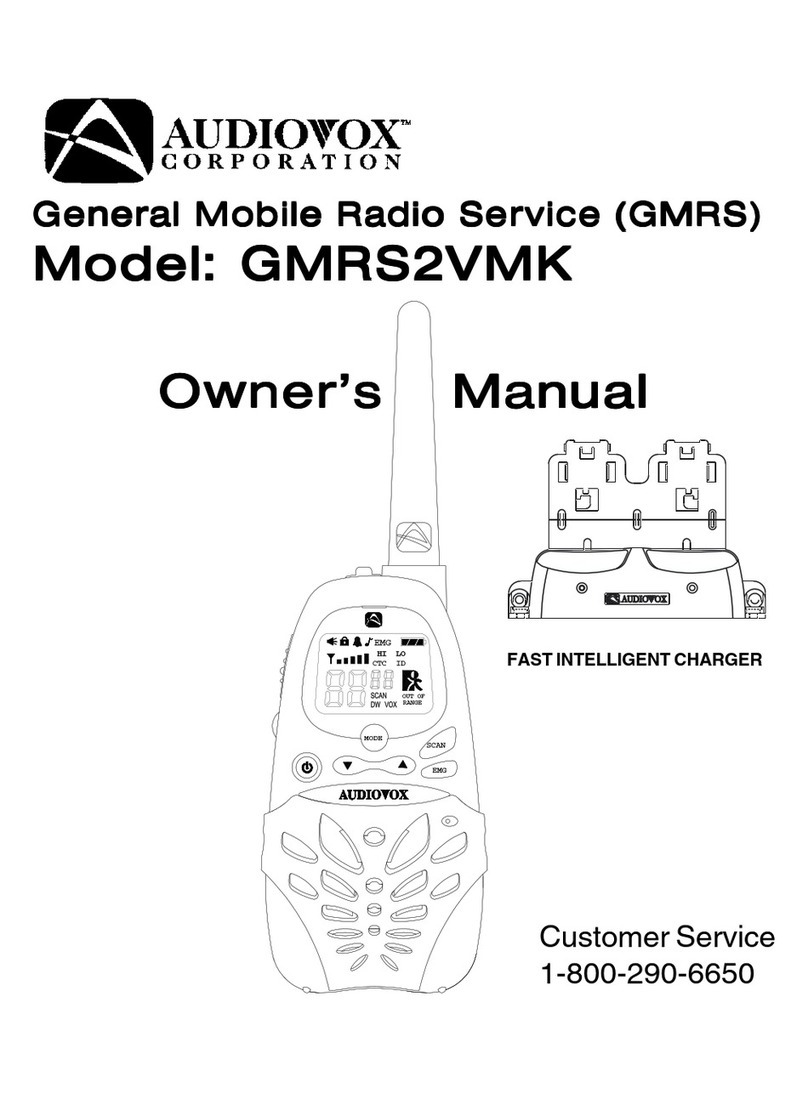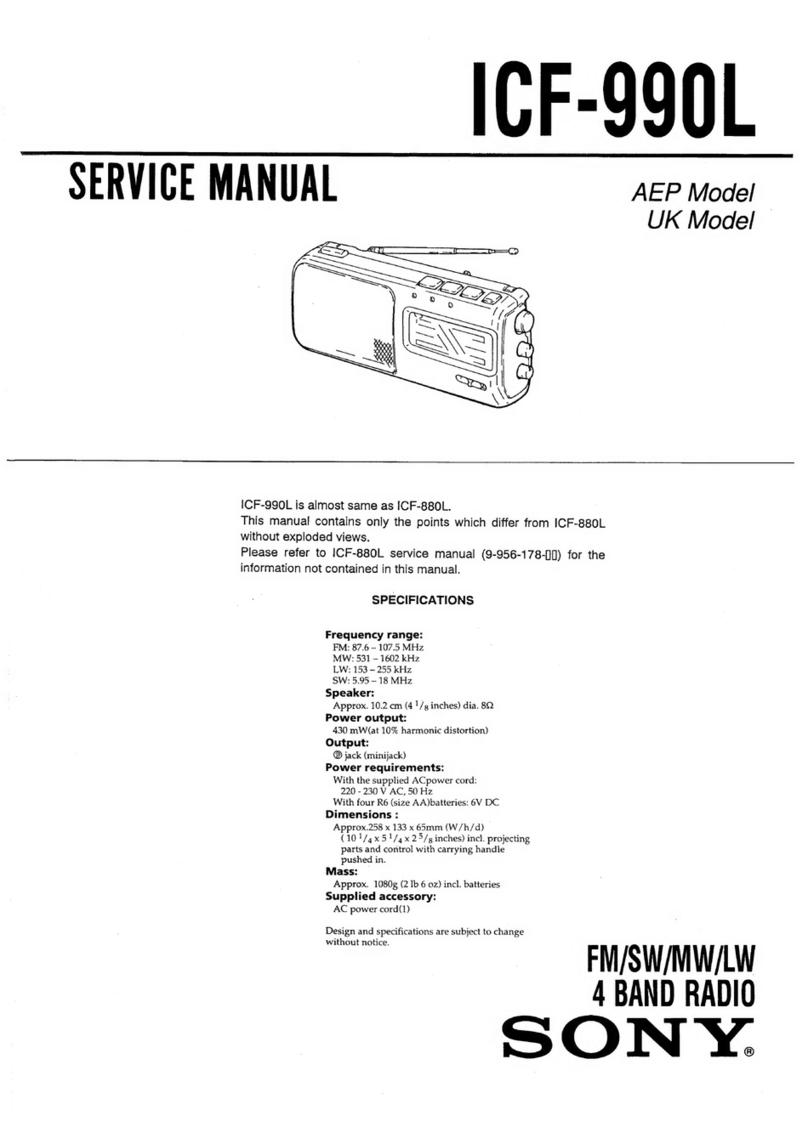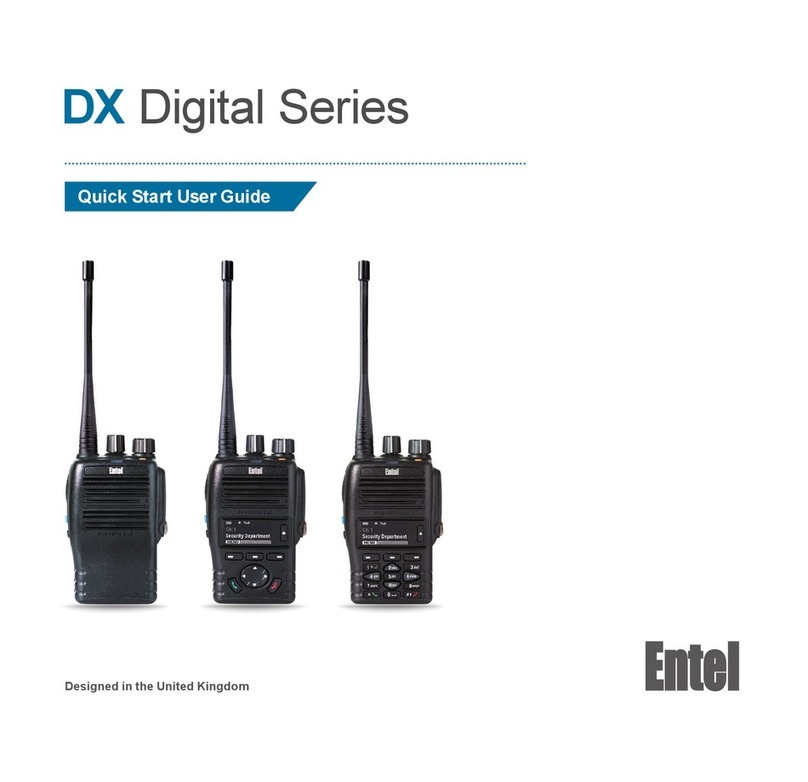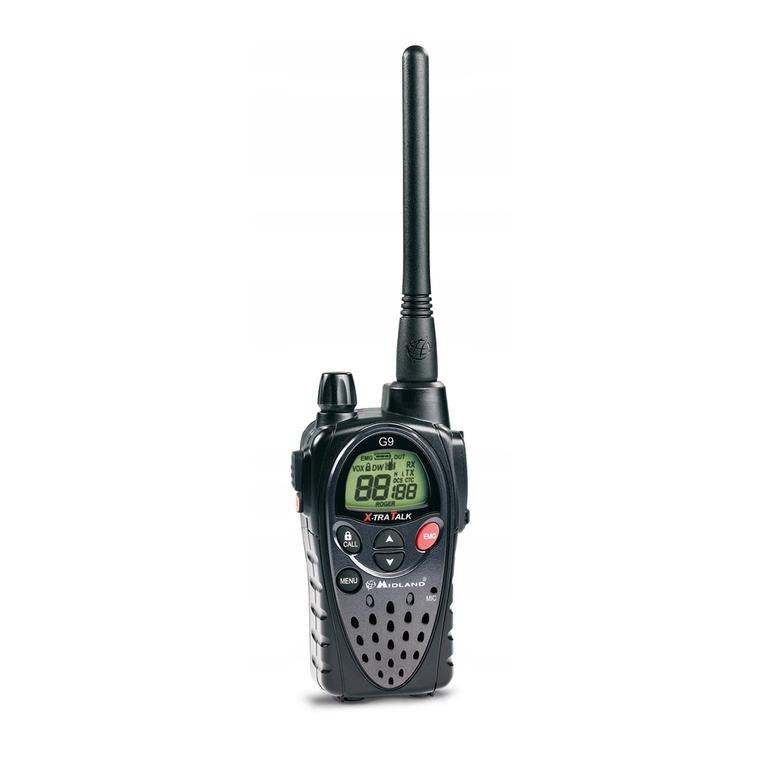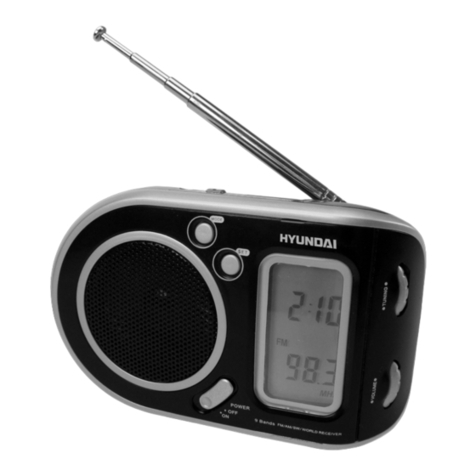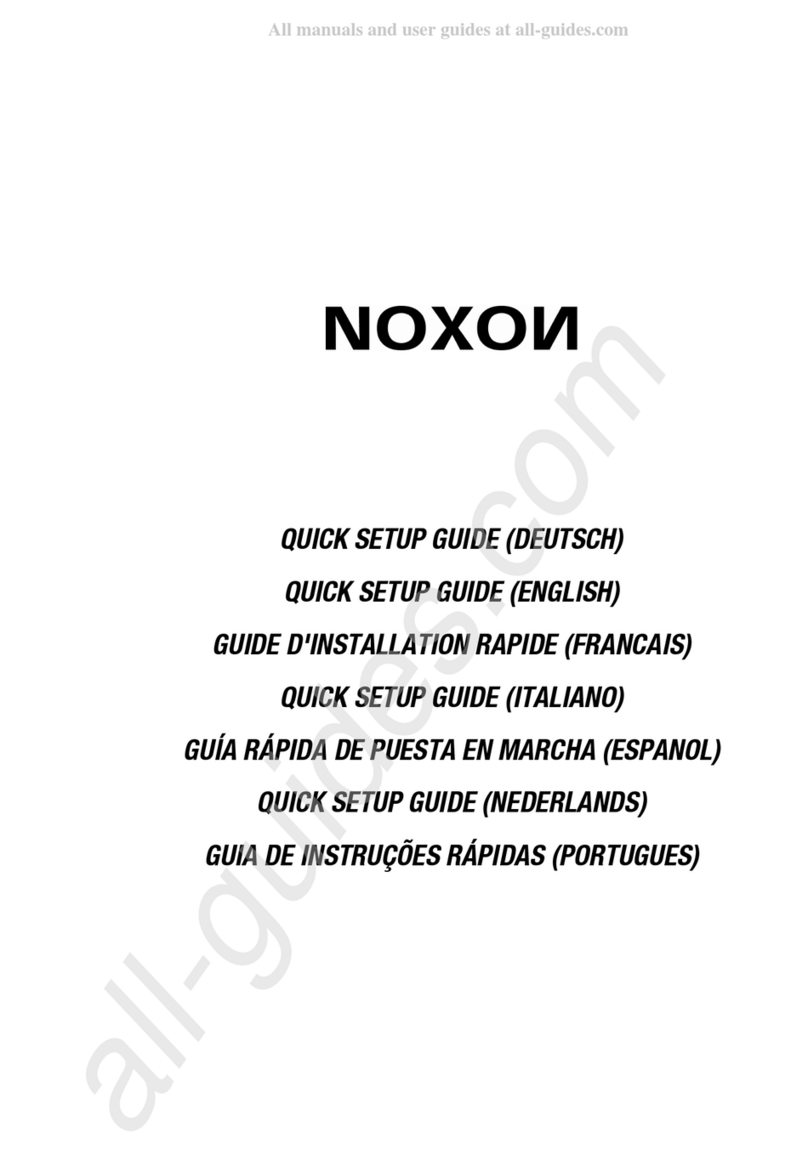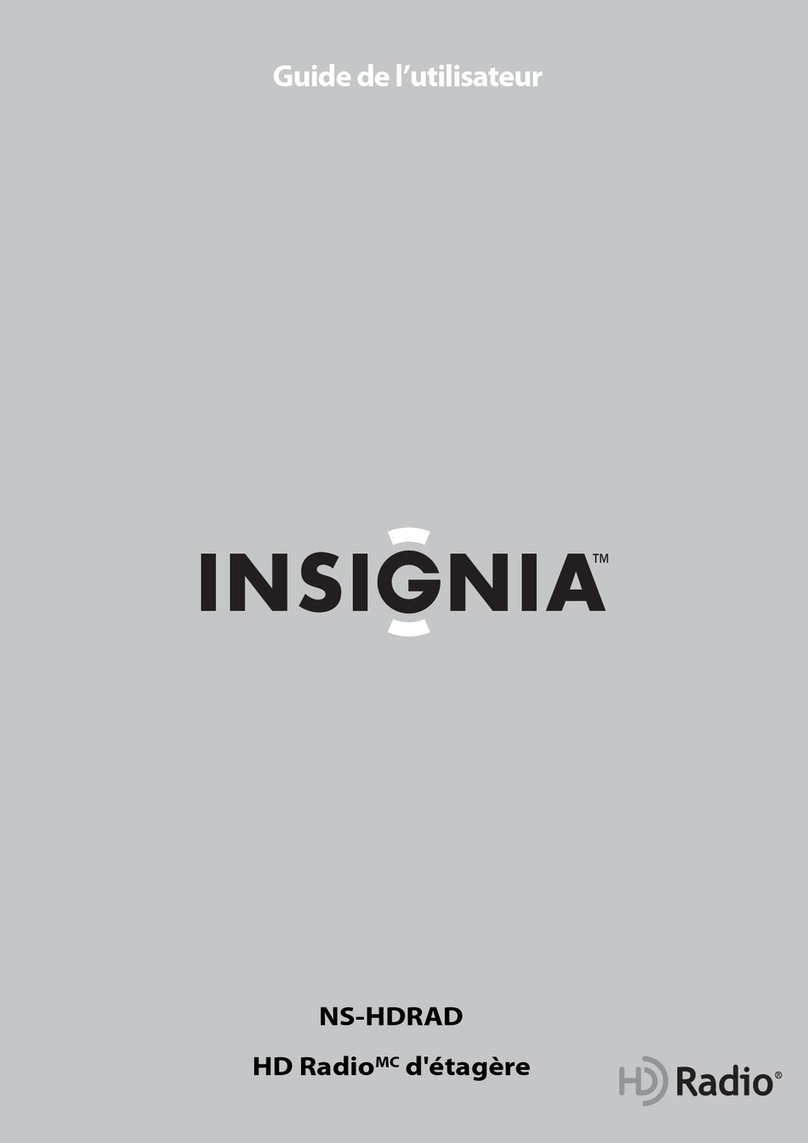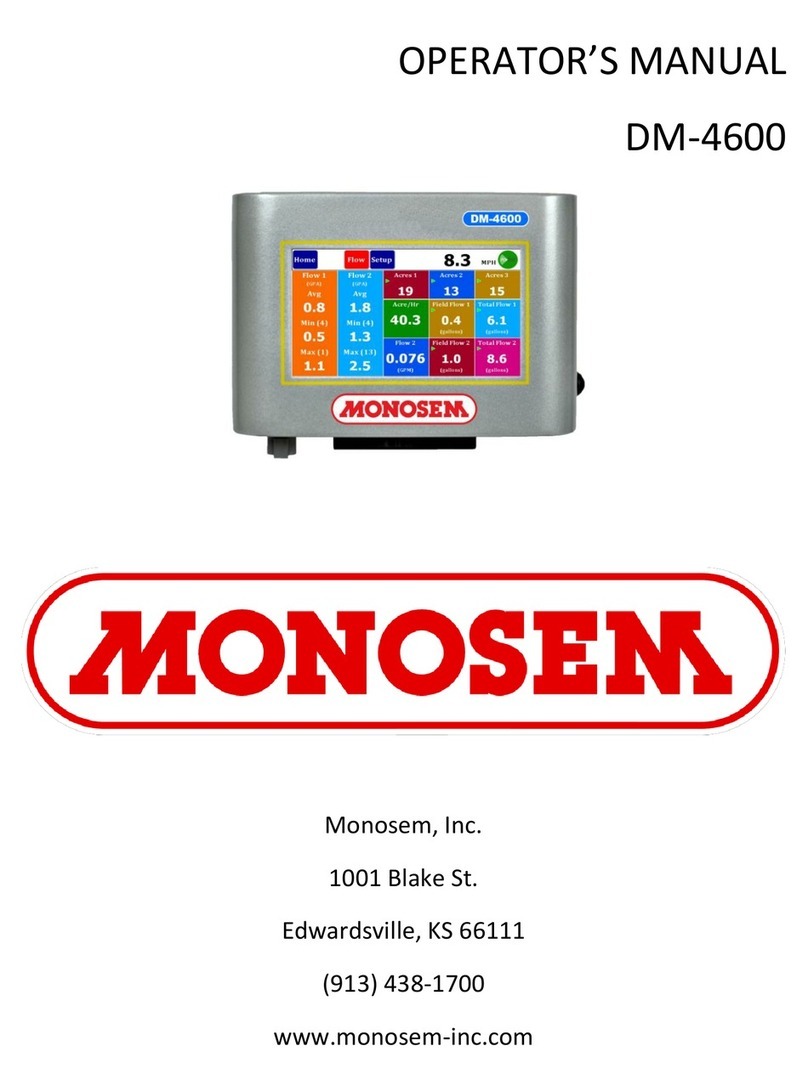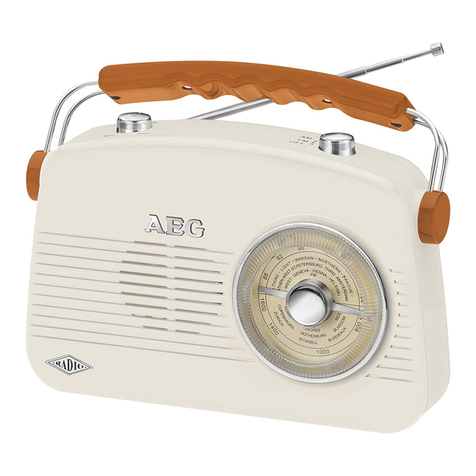Chapter Audio 19 User manual

19-i
PUB 23 - MAINTENANCE MANUAL Chapter 19: Radios
Rev. (5-20)
CHAPTER 19
RADIO
TABLE OF CONTENTS
19.1 Statewide 800MHz Radio Systems and Assignments . . . . . . . . . . 19-1
19.2 Warranty and Repair Procedures for 800 MHz Radios . . . . . . . . . 19-3
19.3 Radio Courtesy . . . . . . . . . . . . . . . . . . . . . . . . . . . . . . . . . . . . . . . . . . . 19-4
19.4 Deactivation of the Emergency Button for 800 MHz Radios . . . . 19-6
19.5 Standardize Installation Placement for 800 MHz Radio
in Dump Truck . . . . . . . . . . . . . . . . . . . . . . . . . . . . . . . . . . . . . . . . . . . 19-6
19.6 Close Proximity of 800 MHz Radios . . . . . . . . . . . . . . . . . . . . . . . . . 19-7
19.7 County Name Changes on the 800 MHz Radio Display Screen . 19-8
19.8 Inventory of 800MHz Radios . . . . . . . . . . . . . . . . . . . . . . . . . . . . . . . 19-9
19.9 Inspection of 800 MHz Radios . . . . . . . . . . . . . . . . . . . . . . . . . . . . . 19-9

19-ii
Rev. (5-20)
Chapter 19: Radios PUB 23 - MAINTENANCE MANUAL

1Rev. (5-20)
PUB 23 - MAINTENANCE MANUAL Chapter 19: Radios
19.1 RADIO SYSTEMS AND ASSIGNMENTS
MOBILE TWO WAY RADIOS
Pennsylvania Department of Transportation’s (PennDOT) radio equipment is Department owned and the
system maintenance is accomplished through a contract.
The Director of the Bureau of Maintenance and Operations is responsible for the Department's two-way
mobile radio system.
USE
The Department radio system is primarily used to direct field operations within the individual Engineering
and Maintenance Districts. Most of the communications occur between the Maintenance District vehicles and
their base stations. It is essential that each radio operator study the operation of the radio equipment as
outlined in this Chapter.
CRITERIA FOR TWO-WAY RADIO ASSIGNMENT
The following positions type of equipment can be considered for two-way mobile radio installation.
Exceptions can be requested and all installations will be at the discretion of the Secretary of Transportation,
Bureau Director, District Executive or Maintenance Manager.
CENTRAL OFFICE
Secretary of Transportation
Deputy Secretary for Highway Administration
Deputy Secretary for Administration
Chief Highway Engineer
Director, Bureau of Maintenance and Operations
Quality Assurance Field Evaluators - East
Quality Assurance Field Evaluators - West
Chief, Fleet Management Division
Fleet Management, Equipment Manger
Regional Fleet Advisor - East
Regional Fleet Advisor - West
Chief, Core Driller - Statewide
Bridge Inspection Cranes - Statewide
Automotive Section, Fleet Management
Mobile Radio Unit, Central Office

2
Rev. (5-20)
DISTRICT OFFICE
District Executive
Assistant District Executive - Maintenance
Assistant District Executive - Construction
Assistant District Executive - Design
District Maintenance Manager
District Equipment Manager
Assistant District Equipment Manager
Line Painting Train
Station Wagons
Other Equipment Assignment to District Office
COUNTY MAINTENANCE OFFICE
Maintenance Manger
Assistant Maintenance Manger
County Equipment Manager
Highway Foreman
Snow Fighting Dump Trucks
Fuel Trucks
Tractor Trailer Unit
Shop Truck
Lube Truck
Other Equipment as Deemed Necessary
Vehicles are radio equipped for better coordination, operations and productivity between Central Office,
District Offices and County Maintenance personnel to accomplish the Department's programs.
DAMAGE TO, THEFT, FIRE OR LOSS OR STOLEN RADIO EQUIPMENT
All damage to or the theft/loss of radio equipment is the responsibility of the Department of Transportation.
To document such losses we require the following to be furnished depending on the nature of the loss:
1. Preliminary Accident Report
2. Theft or Vandalism Report
3. SAP Screen Printout
4. Letter Explaining Cause of Damage or Loss
5. Form M-882
At the time, the damage, theft or loss is detected, the following steps must be taken:
The Contract Administration Unit is notified, a Radio Work Order (M-882) is initiated by the designated
Department employee. (Theft, vandalism accident damage must be investigated by the Pennsylvania State
Chapter 19: Radios PUB 23 - MAINTENANCE MANUAL

3Rev. (5-20)
Police). The service contractor is notified by the District or Maintenance Office Personnel to list all damaged or
missing equipment and to replace same. The cost of replacement will be charged to the County Maintenance
Office.
A copy of both the Radio Work Order (hard copy) along with the form(s) or letter of explanation will be
forwarded to the Contract Administration Unit upon completion of the services.
19.2 WARRANTY AND REPAIR PROCEDURES FOR 800 MHZ RADIOS
All Districts and Counties are responsible for the return of malfunctioning equipment in accordance with the
“Return-to-Factory Warranty” contract. The following steps describe the procedure for extended warranty
repair service. This procedure applies only if the subscriber device has been shown to be defective AND it is
covered under the Commonwealth’s contract.
ITEMS COVERED:
All M-803 Mobile Radios and Control Heads
All P-7200 Series Portable Radios
All P-7200 Series Portable Radios
All V-TAC Units and Control Heads
ITEMS NOT COVERED:
CS-803 Control Stations, SP-103 Devices, Tone Remotes, Portable Batteries
Tone Remotes, Portable Batteries
Charger (desk or vehicle), Holsters, Antennas, Installation Kits or Components and Miscellaneous Accessories
TROUBLESHOOTING-MOBILE RADIO:
1. If your district or county is having trouble with 800 MHz Mobile Radio, troubleshoot and eliminate
the obvious items (i.e., broken/loose antenna, connections of microphone to microphone cord, power
to radio was not turned off, and on volume button, etc.)
2. If all obvious items check well, you must place a call to the customer service center at 1-800-339-4150
(ASC).
3. When calling the customer service phone number, the representative of Motorola Solutions will
establish a trouble ticket.
4. The ASC will be able to look at the mobile radio and determine if they can fix it in the field or if it must
be returned to Motorola Solutions in Harrisburg.
5. If the radio must be returned to Harrisburg, do not let the ASC take the radio. Ask the ASC technician
to provide you with the mobile radio’s serial number, USER ID, and IP Address.
TROUBLESHOOTING-PORTABLE RADIO:
1. If it is determined that a portable radio is malfunctioning, it can be sent to Motorola Solutions. Thus,
your District/County will save the cost of a service call.
2. Remember that portable radios are stand alone items (no wires or other obvious items are attached).
Therefore, if a portable radio does not work, there is nothing attached that can create the problem.
PACKAGING-MOBILE RADIO:
Package the Mobile Radio; do not send the mic, mic cord, or any other attachments. Please include your return
address and the Return Material Authorization (RMA) number(s) on the outside of the package(s).
PUB 23 - MAINTENANCE MANUAL Chapter 19: Radios

4
Rev. (5-20)
Chapter 19: Radios PUB 23 - MAINTENANCE MANUAL
PACKAGING-PORTABLE RADIO:
Package the Portable Radio; do not send the battery, antenna or any other attachments. Please include your
return address and the Return Material Authorization (RMA) number(s) on the outside of the package(s).
CALLING FOR RMA:
1. Call the Motorola Solutions Help Desk at 1-800-339-4150 and request a Return Merchandise
Authorization (RMA) number. Be prepared to provide the following information:
A. Your Name
B. Your E-mail Address
C. Your Telephone Number
D. The Agency, District/County, Company or Organization you represent
E. The Return Address for the replacement or returned parts
F. The type of Radio submitted for repair
G. The Radio’s serial number
H. The problem with the radio
I. The message appearing on the radios display (if any)
J. The vehicle’s ID Number or location
K. The user ID
L. The IP Address
NOTE: Motorola programs all units returned from the Repair center with the original information from the unit
delivered (user ID, IP address and configuration Options) unless instructed otherwise.
After the Help Desk processes your information, a Motorola Solutions representative will provide a RMA
number and shipping instructions. Motorola receives material at the Repair Center by delivery or mail.
Return radios by mail (using UPS, FedEx or other land delivery carriers) to:
COPA Depot Repair
44210 Swatara Drive
Harrisburg, PA 17113
2. Your receipt is an e-mail notice from Motorola with the subject line, “Ticket Number” which includes
the date and time that Motorola received the radio.
3. The unit is repaired in accordance with the maintenance agreement. If the unit cannot be repaired
within the time specified, Motorola will provide a replacement unit to be added to your plant
maintenance inventory.
4. Upon completion of repairs the unit is shipped back to the address provided in item 1-e.
19.3 RADIO COURTESY
Observance of a few simple rules of common courtesy will contribute to the effectiveness of our radio
communication system. When you are operating a radio, you must remember to follow these rules:
1. Always monitor the airways a few seconds before transmitting. The microphone is equipped with a
monitor button. The monitor will only open the F4 receiver, used by District bases 1, 3 and 6 and
monitor mobiles sharing the base frequency. Otherwise, the use of a scanner is required to monitor
base units within a District.

5Rev. (5-20)
PUB 23 - MAINTENANCE MANUAL Chapter 19: Radios
2. Do not interrupt when someone else is transmitting.
3. Do not interrupt when a series of transmissions are in progress.
A. Use your radio only for necessary communication directly concerned with your work.
B. Do not use the radio for planning or scheduling activities that involve lengthy discussion.
C. Do not use your radio to reprimand a subordinate, (many units are monitoring your
transmission).
D. Do not use the radio system in the same manner as a CB, it is to conduct only department
business.
E. Do not use obscene, abusive or profane language in a transmission. An operator using obscene or
profane language when transmitting is in violation of FCC regulations and is subject to fines and
other penalties.
F. Mobile units should not be used for traffic control, use low power portables instead.
G. Emergency communications have priority over all other transmissions. Discontinue transmission
immediately when you are requested to do so by another operator under emergency situations.
Abiding at all times by these rules of courtesy will mitigate confusion and unnecessary delay in transmitting
and receiving communications.
PRECAUTIONS
When a radio transmitter is in operation, it creates a field of electrical energy surrounding the antenna. In
order to obtain optimum results and safe operations, the following precautions must be taken:
1. The antenna must be vertical when the radio is being operated. If bent over for low clearance reasons,
never leave the antenna strapped and grounded to the gutter mount while transmitting.
2. While transmitting, care must be exercised to prevent anyone from coming in contact with the
antenna. Such contact could result in severe burns.
3. While transmitting when the car is standing still, the operator should run the engine just above an
idle to prevent an excessive electrical drain on battery this is especially important during winter
operations.
4. It has been found that under exceptional circumstances, electric blasting caps may pick up enough
electrical energy from the antenna to cause them to explode. For this reason, operators of mobile units
must shut off their transmitters when they are within 50 feet of electrical blasting operations.
5. When washing out vehicle cabs, do not spray the control head with water as they are not water proof
and contain circuit boards which are easily damaged; protect them by wrapping plastic around the
unit.
RADIO PROCEDURES
Requirements
When communicating by radio, speak slowly, clearly and use a natural tone.
The general radio procedure to be followed during a snow emergency is discussed in Chapter 4 of this
Maintenance Manual. Efficient operation of a radio is based on brevity and courtesy.

6
Rev. (5-20)
Brevity
Efficient radio communications requires brief messages. Know in advance what will be transmitted. When
transmitting detailed instructions, write the message beforehand to ensure clarity and brevity.
As an aid to brevity, a code system has been developed which should be used to cover many common
communications. A copy of the various codes and their meaning follows in Section 2.
Each operator is required to keep the list of radio call numbers of all units readily available.
19.4 DEACTIVATION OF THE EMERGENCY BUTTON FOR 800 MHZ RADIOS
The 800 MHz emergency button has been deactivated on all Department of Transportation’s personalities and
profiles across the Commonwealth.
1. Near the display screen on M-803 mobile radios and SP-103 desktop radios
2. Near the press-to-talk button on the P7200 Series portable radios.
In some cases, a phantom emergency shall occur or a radio will not be deactivated. In these cases, each District
and County has up to three personnel authorized to call the Network Operations Center (NOC) in Harrisburg,
to have this emergency deactivated. Otherwise, you can notify the Radio Unit for this deactivation.
19.5 STANDARDIZE INSTALLATION PLACEMENT FOR 800 MHZ MOBILE
RADIOS IN DUMP TRUCKS
The Department of Transportation is standardizing the installation placement of 800 MHz dash and/or trunk
mount mobile radios in dump trucks. The standardization is a result of various installation locations that may
pose an inconvenience to the operator and/or create confusion to the service installers or repair person.
Moreover, the standardization should eliminate the water intrusion problems that have occurred across the
Commonwealth.
The trunk mount radios can be reconstructed to resemble the dash mount radios.
1. The primary location for installation of the mobile radio shall be on the post that mounts the Spreader
Controls.
A. Installers and/or service technicians shall remove this access panel/door prior to attaching the
mobile radio.
B. Installers and/or service technicians shall ensure that the present wiring of the Spreader system
will not be nicked, cut, torn or damaged in any way.
C. They must also ensure that the Spreader system wires will not be damaged or worn due to
contact through vibration.
D. A reasonable amount of wiring for the 800 MHz radio shall be stored inside the cabinet to allow
the access panel/door to be removed to allow the technician/mechanic access to the Spreader
control electrical components and wires.
2. The alternate location for installation of the mobile radio shall be on the dash of the dump truck.
A. Installers and/or service technicians shall ensure that the mobile radio is completely secured to
the metal structure underneath the protective padding.
Chapter 19: Radios PUB 23 - MAINTENANCE MANUAL

7Rev. (5-20)
19.6 CLOSE PROXIMITY OF 800 MHZ RADIOS
The Department of Transportation is recommending the following procedures for communicating with other
units that are in close proximity. These locations may be plow trains for snow removal and small work zones.
These 800 MHz radios are designed and have the capability of transmitting and receiving “On” and “Off” the
radio network.
1. “On” network describes the actual use of the 800 MHz network. Secure communications are
transmitted and received through high profile towers and microcell sites. Standardized voice groups
are defined and should be utilized for proper communication channels.
2. “Off” network describes the basic use of low band radio waves for communicating.
A. The “Off” network is from one radio antenna to another radio antenna.
B. The typical range is your line of sight up to a maximum of two miles.
C. A limiting factor is the geography of the land.
3. Communication links between “On” and “Off” network do not exist.
A. Thus, only personnel transmitting/receiving “On” the network shall communicate with others
that are “On” the network.
B. Those personnel transmitting/receiving “Off” the network shall communicate with others that are
“Off” the network.
C. As a suggestion, managers and/or supervisors should be notified when personnel have the need
to talk “Off” network.
PROCEDURES FOR PROGRAMMING MOBILE RADIOS “OFF” NETWORK:
1. Notify manager/supervisor of the need to leave the “On” network, identify the “Off” network
frequency to be used and coordinate the move with other members of your work group.
2. Press the “C” button on the 800 MHz display screen.
3. Once “Off” network, press the right or left arrow buttons to scroll to the designated channel.
PROCEDURES FOR PROGRAMMING MOBILE RADIOS “ON” NETWORK:
1. Notify others when leaving the “Off” network channel.
2. Press the “C” button on the 800 MHz display screen.
3. Once “On” network, press the pre- programmed “A” or “B” buttons or use the right or left arrow
buttons to scroll to the designated voice group.
4. Notify manager/supervisor that you are back “On” network.
PROCEDURES FOR PROGRAMMING PORTABLES (HAND HELD) RADIOS “OFF”
NETWORK:
1. Notify manager/supervisor of the need to leave the “On” network, identify the “Off” network
frequency to be used and coordinate the move with other members of your work group.
2. Press the “A” or “B” button on the top of the portable near the display screen until you see
“SELMODE” (select mode) on the display screen.
3. Quickly press the “Up” or “Down” button on the side near the “Press-to-Talk” button, keep pressing
either button until you see “OCF” (OpenSky Conventional FM) on the display screen.
PUB 23 - MAINTENANCE MANUAL Chapter 19: Radios

8
Rev. (5-20)
4. Once at the “OCF” screen, press the “A” button (Go To) at the top of the portable.
5. Once “Off” network, turn the channel selector (numbered 1 – 16) to scroll to the designated channel.
PROCEDURES FOR PROGRAMMING PORTABLES (HAND HELD) RADIOS “ON” NETWORK:
1. Notify other of leaving the “Off” network channel.
2. Press the “A” or “B” button on the top of the portable near the display screen until you see
“SELMODE” (select mode) on the display screen.
3. Quickly press the “Up” or “Down” button on the side near the “Press-to-Talk” button until you see
“OCF” (OpenSky Conventional FM) on the display screen.
4. Once at the “OTPMODE” screen, press the “A” button (Go To) at the top of the portable.
5. Once “On” network, turn the channel selector (numbered 1 – 16) to scroll to the designated voice
group.
6. Notify manager/supervisor that you are back “On” network.
SUGGESTED SCENARIO FOR PLOW TRAINS:
All plow trucks within the plow train should have the radios “Off” network to talk within the work group.
The manager/supervisor that is in control of the plow train should have his/her portable “Off” network to
communicate with plow train and have his/her mobile “On” network to listen for any pertinent network
communications.
SUGGESTED SCENARIO FOR SMALL WORK ZONES:
All vehicles entering the work zone, vehicles within the work zone, and flaggers should have the radios “Off”
network to enable the truck to truck and truck to ground communications. Vehicles leaving the work zone
should return to “On” network operations. The manager/supervisor that is within the work zone should have
his/her portable “Off” network to communicate with other within the work zone and have his/her mobile
“On” network to listen for any pertinent network communications, vehicles leaving or returning from a plant,
stockpile, authorized dump site, etc. and still a distance away.
SUGGESTED SCENARIO FOR LARGER WORK ZONES (REFERENCE TYPICAL RANGE
OF PORTABLES):
This is a field manager’s/supervisor’s decision based upon the work zone set-up, amount of intersecting
traffic, geography, known network coverage, etc. Due to the typical range of portables that the flaggers would
be utilizing, a decision needs to be made as for flaggers remaining “On” network or to be “Off” network and
relaying information with intermediate flaggers. Naturally, vehicles within the work zone would have to
remain “Off” network due to their close proximity.
19.7 COUNTY NAME CHANGES ON THE 800 MHZ RADIO DISPLAY SCREEN
The county name changes are necessary and required to aide in identifying our agency (Transportation) to
end users from our agency, as well as any other Commonwealth agencies that utilize the 800 MHZ radio
system. As County EOC migrate into the 800 MHz radio network, Districts and Counties shall be provided 80
MHz radio navigation instructions and current or update policy in regards to contacting or receiving the call
from the respective EOC. All PennDOT talk groups with county names shall change from the existing county
name or abbreviated county name to a “T_” county name/abbreviated county name. The “T_” shall represent
“Transportation.” An example of this change is as follows: Example1: Existing talk group name is “Adams”
and new name will be “T_Adams.” Example 2: Existing talk group name is “Butler” and the new change shall
reflect “T_Butlr”. The abbreviation is due to only seven characters are available on the 800MHz display
screen.
Chapter 19: Radios PUB 23 - MAINTENANCE MANUAL

9Rev. (5-20)
19.8 INVENTORY OF 800 MHZ RADIOS
Each District and County is responsible to ensure their plant maintenance radio database is kept accurate and
current. The Radio Unit shall make the appropriate modifications to your 800MHz radio inventory upon the
District or County’s notification to the Radio Unit. The following items shall be placed into the plant
maintenance radio inventory database:
1. Control Stations (CS-803; to include spares at the District level)
2. Desktop Radios (SP103; to include spares at the District level)
3. Mobile Radios (M-803; to include spares at the County level)
4. Portables (P800/801; to include spares at the District/County level)
19.9 INSPECTION OF 800MHZ RADIOS
Each piece of equipment that requires an M-614 to be annotated upon utilization shall also require a short
inspection of the 800MHz radio. The following items shall be checked and documented on the M-614.
PASSENGER COMPARTMENT:
- Does radio turn on upon ignition or manually pressing the power button?
- Are microphone cords, heads and hangers in good repair?
- Is microphone connection tight at radio (hand tight only)?
- Any loose wiring noted?
OUTSIDE:
- Is the antenna base cracked?
- Is the antenna whip missing?
- Is the antenna whip straight?
Additionally, each piece of equipment that requires an M-824 to be annotated upon a preventive maintenance
inspection shall require a more in-depth inspection of the 800MHz radio. The following items shall be checked
and documented on the M-824.
UNDER THE HOOD:
- A+ power lug terminals tight and corrosion free?
- Fuse holder covers in place? Fuses (to include in-line fuses) good?
- Battery terminals clean?
- Related wiring dressed and secured?
- Hamsar relay operational? Also may be located under interior dash.
PASSENGER COMPARTMENT
- Does radio turn on upon ignition or manually upon pressing the power button?
- Microphone cords, heads and hangers in good repair?
- Microphone connection tight at radio (hand tight only)?
- Any radio connections on back of radio or control head (if trunk mount) disconnected or loose (reconnect
and hand tight only if disconnected or loose)?
PUB 23 - MAINTENANCE MANUAL Chapter 19: Radios

10
Rev. (5-20)
- Is the center pin wire flush (not recessed or bent) with cap screw on the radio antenna and GPS wire at
connection to the radio?
- Wiring under dash tight and clean?
- Is speaker wire properly connected at the speaker (not disconnected/loose)?
- All related mounting hardware tight? Any hardware missing?
- Ensure equipment number, radio serial number, userid, and IP address is correct and in accordance with
the plant maintenance radio database. Write radio IP address on M-824.
ROOF OR TRUNK LID:
- Antenna base tight?
- Antenna base cracked?
- Whip tight in its base and set screw present?
- Is the antenna whip missing?
- Is the antenna whip straight?
IN TRUNK (IF RADIO IS PRESENT):
- Any radio connections on back of radio or control head (if trunk mount) disconnected or loose (reconnect
and hand tight only if disconnected or loose)?
- Is the center pin wire flush (not recessed or bent) with cap screw on the radio antenna and GPS wire at
connection to the radio?
- Wiring in trunk tight and clean?
- All related mounting hardware tight?
- Any hardware missing?
FUNCTIONAL TEST:
- Radio can be registered on system and air test (transmission/receiving) is good? Please note that this test
cannot be done within the confines of the garage or under any shelter. Must be done in open air space.
Chapter 19: Radios PUB 23 - MAINTENANCE MANUAL

11 Rev. (5-20)
RADIO CHANGE REQUEST FORM
All transfers of radios must be followed up by an Alias Change Form and sent to: PD, FMD-Radio.
Date:______________ Requestor:________________________________ County:_____________________________
PUB 23 - MAINTENANCE MANUAL Chapter 19: Radios
SAP
Inventory
Number
Old
Truck
Number
New
Truck
Number
Display ID Serial
Number IP Address User ID
Type of
Vehicle;
See Chart
below for
types
If Tranfer
to Another
County,
Which
County?

12
Rev. (5-20)
Chapter 19: Radios PUB 23 - MAINTENANCE MANUAL
Table of contents
